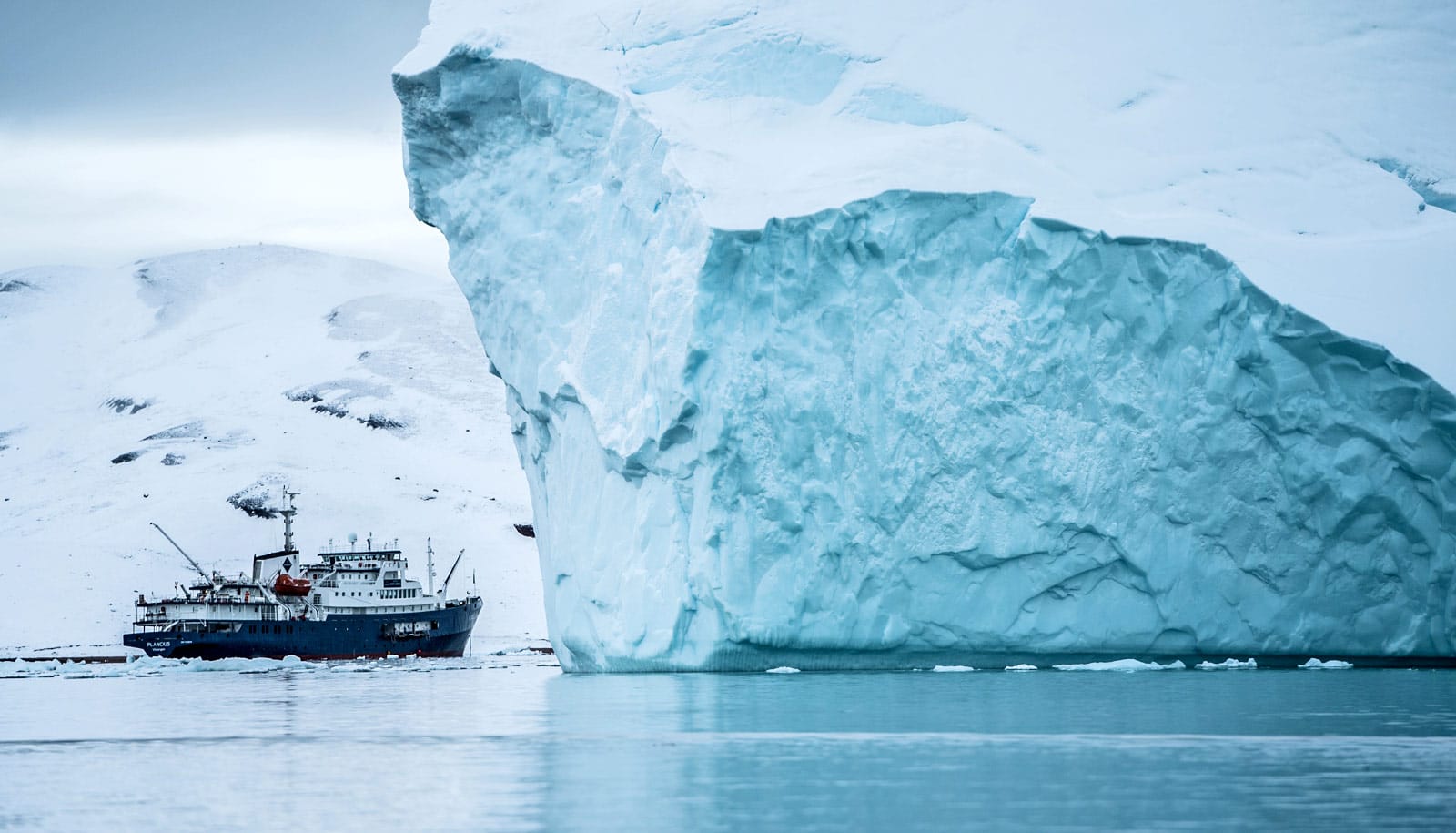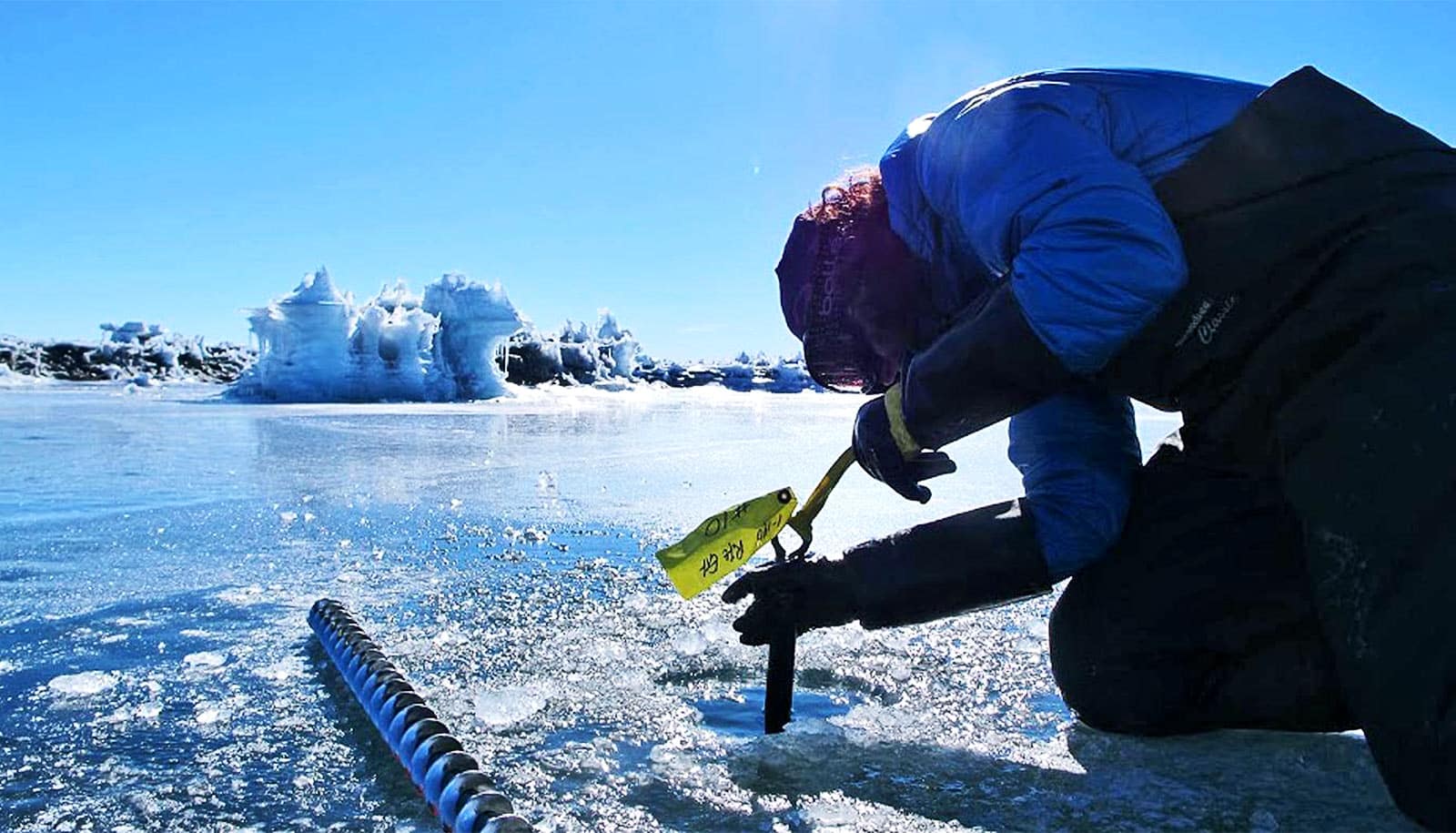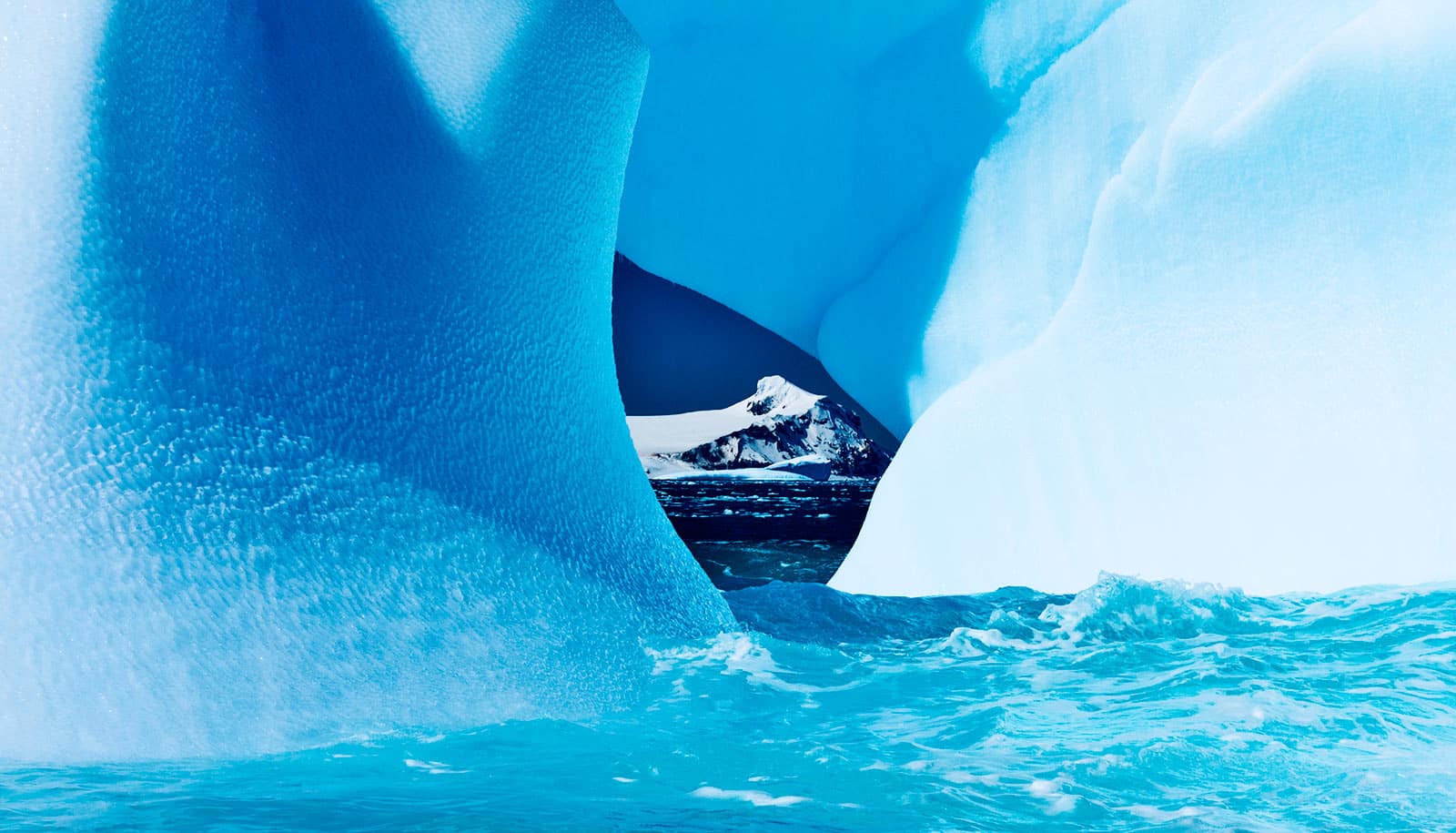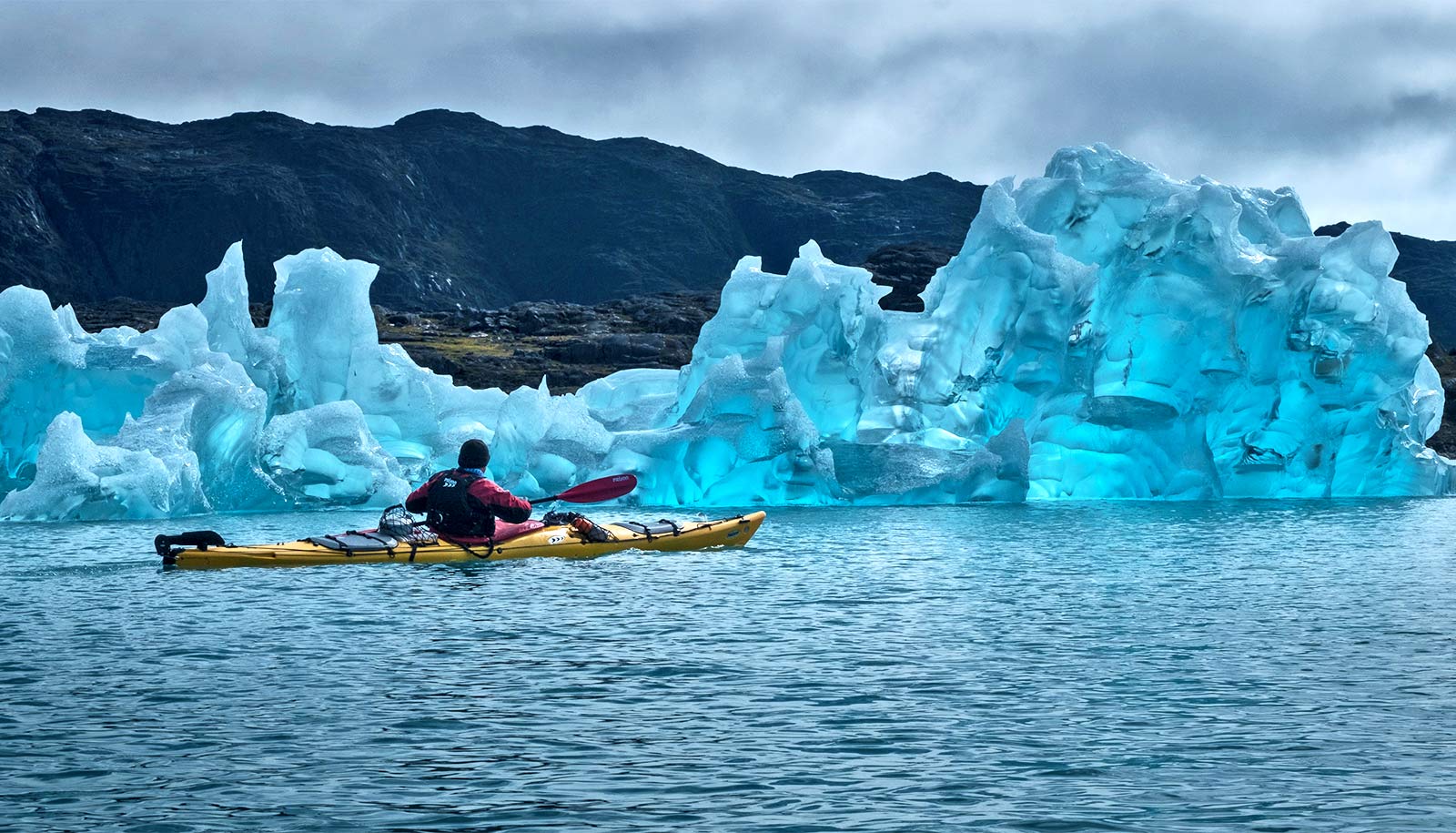Meltwater from Greenland’s ice sheet contributes to global sea level rise. An under-appreciated factor—the snowline’s position on the ice sheet—plays a key role in the melting’s pace, a new study shows.
Researchers used satellite imagery to track the movement of the ice sheet’s snowline—the elevation above where the surface is snow-covered—and below where bare ice is exposed.
The findings show that snowline elevation varies significantly from year to year, and that its variation exerts an outsized influence on the amount of solar radiation the ice sheet absorbs. Changes in snowline elevation from year to year explain more than half of the annual radiation variability on the ice sheet, researchers say.
Ultimately, the amount of radiation the ice sheet absorbs determines the extent to which it melts.
“People who study alpine glaciers have recognized the importance of snowlines for years, but no one had explicitly studied them in Greenland before,” says Laurence C. Smith, a visiting fellow at the Institute at Brown for Environment and Society (IBES) and a coauthor of the paper in Science Advances.
“This study shows for the first time that this simple partitioning between bare ice and snow matters more when it comes to melting than a whole host of other processes that receive more attention.”
Snow cover and bare ice
The results have significant implications for predicting future sea-level rise, researchers say. Meltwater from Greenland’s ice sheet is a large contributor to global sea levels, and the findings show that regional climate models used to predict future runoff often predict snowlines inaccurately.
“We found that models don’t reproduce snowlines very well, which adds an uncertainty to future projections,” says lead author Jonathan C. Ryan, a postdoctoral researcher at Brown University. “But now that we’ve shown how important the snowline effect is, and have some direct observations of snowline positions, hopefully we can improve these models going forward.”
The reason that the snowline is so important has to do with the difference in reflectivity between snow cover and bare ice. Snow is extremely bright and reflects back into the atmosphere the lion’s share of the sunlight it receives.
Bare ice is much darker, and therefore reflects less radiation. Instead, more radiation is absorbed, which heats the ice and leads to melting.
Scientists have well understood these processes for years. What wasn’t known was the extent to which they play out on the Greenland ice sheet, and to what extent snowline migration might regulate melt from year to year.
“That’s a surprise because there’s been a lot of work lately on these ice-darkening processes,” Smith says. “It turns out that in this case, we were missing the elephant in the room, which is the snowline.”
Having established the importance of snowline in energy absorption—and ultimately in melting and runoff—the researchers wanted to see if regional climate models properly captured the effect of the snowline. That’s important because scientists use those models predict future runoff from the Greenland ice sheet.
Too high, too low
Two leading models both fail to capture snowline elevation accurately. One model, known as MAR, set snowlines too high and was therefore likely overestimating runoff in high-melt years. The other model, known as RACMO, set the snowlines too low, meaning it likely underestimates future runoff in a warmer climate.
Given the importance of snowline position, researchers say it’s important the models get the snowline right.
“We’re collaborating now with the modelers, providing them with our observed snowlines,” Ryan says. “That gives them some ground truth they should be able to use to adjust their models. Now there’s something to aim for.”
More accurate forecasts of Greenland’s future contributions to sea-level rise would follow improvements to the modeling snowline, the researchers say.
The NASA Cryosphere Program funded the work.
Source: Brown University



